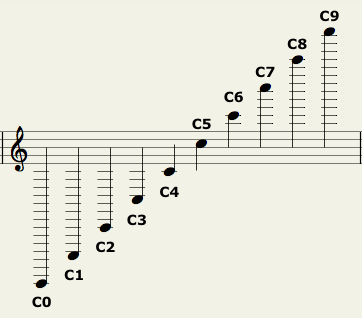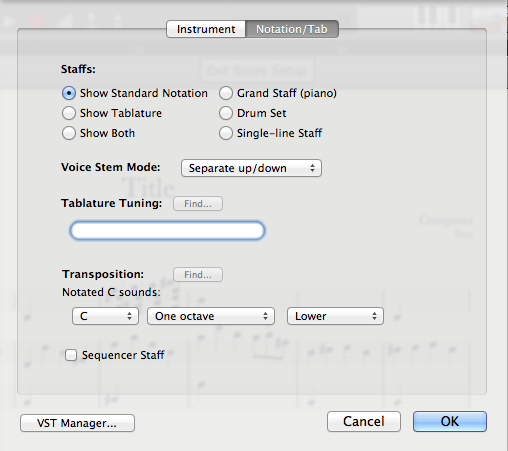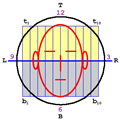Hi all,
I am considering switching from Finale if Notion supports 4 part notation per staff.
Thanks,
-Mike
- It is currently Fri Dec 19, 2025 11:37 pm • All times are UTC - 5 hours [ DST ]
Attention:
Welcome to the old forum. While it is no longer updated, there is a wealth of information here that you may search and learn from.
To partake in the current forum discussion, please visit https://forums.presonus.com
Does Notion 4.0 support 4 parts per staff?
3 posts
• Page 1 of 1
Re: Does Notion 4.0 support 4 parts per staff?
Notion 4, like Notion 3, supports four distinct voices for each staff.
________________
SacredSymphonics
SacredSymphonics
- DaddyO
- Posts: 91
- Joined: Fri Nov 19, 2010 12:44 pm
Re: Does Notion 4.0 support 4 parts per staff?
yamex5 wrote:Hi all,
I am considering switching from Finale if Notion supports 4 part notation per staff.
Thanks,
-Mike
DaddyO wrote:Notion 4, like Notion 3, supports four distinct voices for each staff.
And now for the "I don't recall asking that?" answer . . .
As DaddyO noted, NOTION supports four-part multi-voice music notation per staff or clef, and this is how it looks when you set the option to show the multi-voice notation in color:

This capability is supported both via the keyboard and the mouse-based tools palette, where the tools palette section is shown as follows:
[NOTE: You also can assign different instruments to the voices (a) by specifying MIDI channels; (b) by selecting already defined and created instruments from a list; or (c) by creating and defining a new instrument (either a NOTION-bundled instrument or a VSTi virtual instrument) . . . ]

And since the example is listed as being a "MF3 Jazz Bass", where "MF3" refers to MachFive 3 (MOTU) but the staff is a treble clef, it also is useful to know that NOTION supports transposing staves so that the notes specified in the music notation actually are played at a different user-specified interval, which can range from two octaves below to two octaves above but also can be intermediate orchestral intervals (2nd, minor 3rd, major 3rd, 4th, 5th, 6th, flat 7th, 7th), with this being a feature that I find to be vastly helpful, since (a) I only learned the soprano treble clef as a child and (b) my perspective is that there are 12 notes and 8 or so octaves, hence I prefer to do everything on a soprano treble clef, since I hear the notes in my mind easily and have no difficulties adjusting for octaves, registers, and so forth, all of which keeps the music notation mathematically elegant, where I also prefer to have exactly one name for each note, which maps generally to avoiding the use of flats, since I prefer to be sharp whenever possible, although this tends to be impossible to do all the time, especially when over the years one has not been completely successful in avoiding performing electric bass or lead guitar with musical groups that allow horn and woodwind players, which is fabulous . . .
[NOTE: The "mathematically elegant" aspect refers in part to simplicity and succinctness, where these are the 12 notes {C, C#, D, D#, E, F, F#, G, G#, A, A#, B} and the octaves are identified by integers when it is important, which is done using the US version of scientific pitch notation, where for example "Middle C" is "C4", where instead of having to make sense of 88 or perhaps 96 or more different notes with a virtual festival of essentially identical names when one allows multiple flats, sharps, naturals, and so forth, here in the sound isolation studio there are only 12 notes and 8 or so octaves, and for the most part there are sharps but no flats, and every note has a grand total of one name, all of which I suggest is mathematically elegant, and everything is in one key (C Major) at 4/4 time . . . ]
Mathematical Elegance or Beauty (wikipedia)
Scientific Pitch Notation (wikipedia)
[NOTE: In the following diagram, C0 corresponds to 16.352-Hz, which is subsonic, although I hear it easily; C1 corresponds to 32.703-Hz; C8 is the highest note on a grand piano and corresponds to 4186.0-Hz; and C9 corresponds to 8372.0-Hz. The lowest note for normal "full-range" human hearing (20-Hz to 20,000-Hz) is E0 being 20.602-Hz, which is the one octave lower than the low-pitch "E" string on an electric bass guitar or a string bass, which makes it the low-pitch "E" string of a double bass. The lowest note on a standard grand piano (88-keys) is A0, which corresponds to 27.500-Hz, and I hear notes up to approximately A9, which works for me. The reference tuning pitch is 440-Hz (standard "Concert A"), and C4 is "Middle C" (261.63-Hz) . . . ]

Scientific Pitch Notation ~ Soprano Treble Clef ~ C0 to C9

Fabulous!
-

Surfwhammy - Posts: 1137
- Joined: Thu Oct 14, 2010 4:45 am
3 posts
• Page 1 of 1
Who is online
Users browsing this forum: No registered users and 92 guests